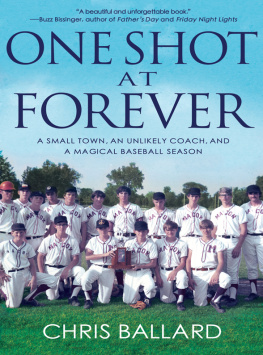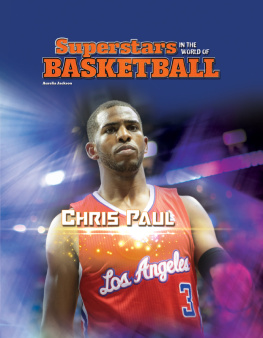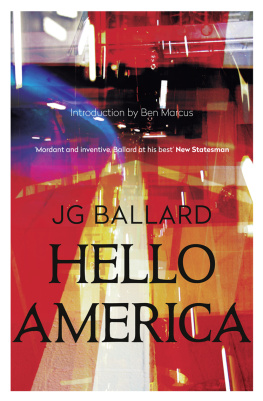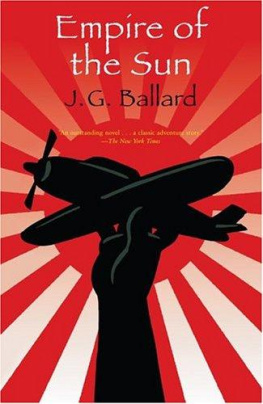
ALSO BY CHRIS BALLARD
The Butterfly Hunter
Hoops Nation
Sports Illustrated
THE ART OF A BEAUTIFUL GAME
THE THINKING FANS TOUR OF THE NBA
CHRIS BALLARD


Simon & Schuster
1230 Avenue of the Americas
New York, NY 10020
www.SimonandSchuster.com
Copyright 2009 by Chris Ballard
All rights reserved, including the right to reproduce this book or portions thereof in any form whatsoever. For information address Simon & Schuster Subsidiary Rights Department, 1230 Avenue of the Americas, New York, NY 10020.
First Simon & Schuster hardcover edition November 2009
SPORTS ILLUSTRATED is a registered trademark of Time Inc. Used with permission.
SIMON & SCHUSTER and colophon are registered trademarks of Simon & Schuster, Inc.
For information about special discounts for bulk purchases, please contact Simon & Schuster Special Sales at 1-866-506-1949 or business@simonandschuster.com.
The Simon & Schuster Speakers Bureau can bring authors to your live event. For more information or to book an event contact the Simon & Schuster Speakers Bureau at 1-866-248-3049 or visit our website at www.simonspeakers.com .
Text designed by Paul Dippolito
Manufactured in the United States of America
1 3 5 7 9 10 8 6 4 2
Library of Congress Cataloging-in-Publication Data Ballard, Chris.
The art of a beautiful game: the thinking fans tour of the NBA / Chris Ballard.
p. cm.
1. National Basketball AssociationAnecdotes. 2. Basketball playersAnecdotes. I. Title.
GV885.515.N37B345 2009
796.32364dc22 2009024308
ISBN 978-1-4391-1021-8
ISBN 978-1-4391-4117-5 (ebook)
To Callie and Eliza
Contents
THE ART OF A BEAUTIFUL GAME
Introduction
Some years ago I had the unenviable task of guarding Mark Aguirre in a pickup game. Id like to say I held my ground as he posted me up, absorbing each of the bargelike blows he delivered with his hips and prodigious backside, holding strong against the Noreaster of Ass he unleashed upon me. But I did not. Like so many opponents during Aguirres NBA days, I slid and stumbled and shuffled backward until he was essentially standing under the basket and I out-of-bounds. At which point he could merely reach up and lay the ball into the basket.
How I came to be guarding Aguirre was a matter of circumstance. I was in Indianapolis writing a story for Sports Illustrated and had wandered over to a local health club looking for a run. Aguirre, then an assistant coach for the Indiana Pacers, arrived a half hour later. My teammates, kind souls that they were, agreed that I should be the one to guard Aguirre.
This was what an NBA coach might refer to as a matchup problem. Aguirre was a 6 6, 230-pound NBA legend who averaged 20 points during his 13-year career with the Mavericks and the Pistons, and even at 43 years old, he was still in remarkably good shape. I, on the other hand, was a 6 1, 175-pound former small-college player who had a difficult enough time defending the guys in my local rec league.
For the most part Aguirre took it easy on me in the post, backing me down only a handful of times. Not that it mattered; he turned out to be just as adept on the perimeter. At one point I was guarding him on the wing and he fooled me so completely, using a ball fake together with a subtle push on my leg and hip, that I actually turned around to try to beat him to the baseline. In mid-sprint I heard Aguirre chuckle behind me. He was standing in the same spot, having not moved an inch, and calmly fired up and swished a three-pointer. (He was a much better outside shooter than I recalled.) What in the world, I asked him, did you just do?
He only smiled. Mark Aguirre did not get where he was by giving away his secrets to random dudes he meets at the gym.
That night I saw him at Conseco Fieldhouse, before the Pacers game, and his face lit up with recognitionand amusement. Hey, still waiting for that baseline drive? he asked.
I laughed, then asked if I might pick his brain at some point, this time in the name of journalism. Check back with me after the game, he said.
I did, and he was true to his word. That night, after a Pacers win, Aguirre spent nearly 45 minutes in a back corridor of Conseco showing me the secrets of his post moves: how to leverage a defender, which arm to use to swim past an opponent, how to lock in an opposing big man on a lob pass and, best of all, how to push the refrigerator (that is, use your outside leg to drive into a defender, as if he were a Frigidaire).
As Aguirre talked, I realized that in all those years of watching him play, Id never fully appreciated what he was doing. I just figured... well, I dont know what I figured. That he just used his butt to move guys out of the way? That hed been born a little quicker and trickier around the basket than the rest of us?
Unmistakably, though, there was an art to what he was doing, one honed over years, one only certain players have mastered, one only certain players can master, for it requires a rare combination of dedication, talent and intuition. To appreciate it, you need only watch one of those young, springy big men who enter the league each year. You know the typelong-limbed, imposing, throwing down monster dunks. These players may be freakishly athletic, but their post moves are so rudimentary as to be nonexistent. Pump fake? Never. Freeze fake? Whats that? Moving the refrigerator? Theyre not even good at moving their feet.
Still, it is the resplendent jams of these high-flyers that we see on the highlights, and that 10-year-old boys mimic on Nerf hoops. And theres nothing wrong with thatI admire the dunk as much as anyonebut it is a shame that few fans are privy to a true craftsman like Aguirre breaking down his art.
Instead, we often hear about how the pro game is flawed, full of remarkable athletes who boast unremarkable skills. As a writer who covers the NBA, I run into this mind-set on occasion: No one plays defense, no one passes and its all about getting paid, some people say. How can you enjoy watching that?
In response Ill usually mumble something about Chris Paul and drop steps and bank shots, but thats not much of a comeback. What I should say is, Sure, theres a lot about the pro game thats messed up, like guys who can hit their head on the rim but cant dribble with their left hand, and, yes, there are some lackadaisical millionaires; but its still a beautiful, complicated game, the best ever invented in my opinion, and there are plenty of guys who treat it as such.
Then I could explain why thats true. I could describe the way Ray Allen squares up on his jump shot so perfectly that, were he on sand, he would spring up and, upon returning to earth, land precisely in his own footprints. I could talk about underhand scoop shots that rise like helium balloons. I could describe nine seconds left, the floor spread and the arena roaring like a 747 as Kobe Bryant holds the ball at the top of the key, about to break thousands of hearts.
I could talk about reverse layups with so much spin they hit the backboard and then shoot sideways as if yanked on a leash. I could evoke the
Next page












